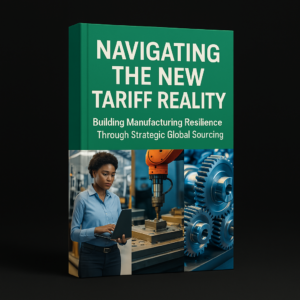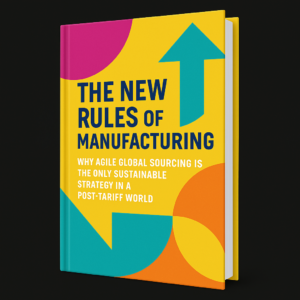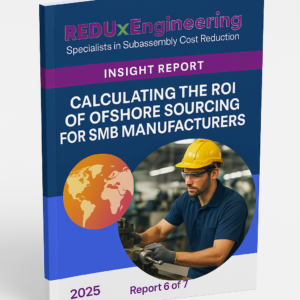
Introduction:
Small and mid-sized manufacturers often wear many hats – designing products, fabricating parts, assembling, quality testing, logistics, and so on. This report explores an important strategic benefit of outsourcing/offshoring parts of production: it allows a company to refocus on its core competencies. By letting external specialists handle non-core components or processes, Western manufacturers can simplify operations, reduce internal complexity, and concentrate their resources on what they do best (be it R&D, system integration, or customer-specific customization). We will discuss how, far from “losing control,” outsourcing can increase a company’s agility and innovation by freeing up bandwidth and capital. In essence, think of it as doing what you’re great at, and partnering on the rest.
The Burden of Doing It All:
Many Western SMBs pride themselves on in-house expertise, which is admirable – but trying to do everything can stretch a team thin. Let’s say you’re a mid-size tech equipment maker whose core IP is in product design and assembly. If your team is also running a small machine shop to make brackets and doing moulding for plastic enclosures, that’s managerial attention and workforce tied up in areas that may not differentiate your business. As a result, engineers who could be developing the next product are instead troubleshooting machining issues or chasing commodity part costs. A survey of SME manufacturers in 2024 by Tapecon found that internal product teams are often “spread too thin” across tasks, and outsourcing can free them to focus on what drives success. By outsourcing manufacturing of certain components, companies can reduce operational complexity. Fewer processes in-house means fewer things to manage (scheduling, maintenance, workforce training for those processes, compliance, etc.), which typically reduces costs and headaches.
Focusing on High-Value Activities:
When you outsource non-core production, your internal team can reallocate time and money to core value-adding activities. For example, instead of managing a stamping press to make sheet metal covers, your operations folks could spend that time working with customers on custom configurations or improving the final assembly process. According to classic operations strategy, every company has limited resources – deploying them where they yield the highest return is key. Many SMEs find that by offloading production of subassemblies, they can invest more in R&D and marketing, fueling growth. As one business owner put it, “Once we outsourced the circuit board manufacture, our electrical engineers stopped firefighting PCB production issues and started developing new features for our product line.” The cost savings from outsourcing is one benefit, but this redeployment of talent often yields an even bigger long-term payoff in innovation and market responsiveness. Research and anecdotal evidence confirm this: outsourcing allows businesses to “delegate non-core functions and channel their energy into what truly matters”.
Leveraging Specialized Expertise:
Another angle is that by outsourcing, you gain access to specialized expertise that would be expensive or impractical to maintain internally. A small manufacturer might not be expert in plastic injection moulding or PCB assembly – but their offshore partners are. Tapping into that expertise can improve product quality and design. A contract manufacturer might suggest a design tweak that improves manufacturability or a different material that extends product life. These are enhancements you get by virtue of working with specialists. Tapecon’s blog highlights that a good contract manufacturing partner can provide extraordinary value during design – suggesting improvements for quality, speed, and cost. In other words, outsourcing isn’t just a way to dump work on someone else; it’s a way to collaborate with experts in particular domains. REDUxEngineering’s model, for instance, is engineering-driven – we work with specialized suppliers and add our own engineering know-how to optimize designs. So the client ends up with a better, cheaper part than they could likely achieve alone. Meanwhile, the client’s team stays focused on system-level innovation and customer requirements, trusting the details of part fabrication to expert hands.
No Upfront Investment, More Flexibility:
Outsourcing manufacturing also means you don’t have to invest in expensive equipment or facility expansions for every new project. This greatly lowers the financial risk of innovation. If you develop a new product that requires, say, die-cast aluminium parts, traditionally you’d have to buy casting machines or expensive moulds if doing it in-house. That’s a large capital expense that only pays off if the product is successful. By outsourcing, you can use your partner’s existing capabilities – often with no up-front capex on your part (especially with a contingency-based partner like REDUxEngineering). This makes it easier to try new products because the cost to scale up production is lower and more variable (you pay per part rather than sinking fixed costs). It also means if a product winds down, you’re not stuck with idle machines; you simply ramp down orders to the supplier. Flexibility and scalability are improved. SMEs that outsource can scale production volume up or down more smoothly compared to those who own all their production assets (which may be underutilized in slow periods or insufficient in peak periods). This flexibility can be a strategic advantage in markets with fluctuating demand.
Retaining Control Where It Counts:
Some fear that outsourcing means losing control or endangering quality (as discussed in Report 3). In practice, a well-managed outsourcing relationship gives you as much control as you need. You define the specs, you set the quality standards, and you can monitor as closely as you like. Meanwhile, you offload the day-to-day execution to the partner. It’s also worth noting you can start with small steps. You don’t have to outsource your crown-jewel processes right away. Many companies start by outsourcing relatively generic components or ones that are known to be cost sinks. Success in those areas builds confidence to perhaps expand the scope. Over time, you find the right balance: maybe your core competency is final assembly and system integration – you keep that in-house, and you outsource the fabrication of components that feed into assembly. Or you might keep prototype and early-stage production internally for control, then outsource once a product is mature and stable. There are many models, but all share the outcome of allowing your internal team to focus on high-priority work.
Real-world Perspective:
A Western European industrial SME producing electrical control units recently underwent this transformation. They realized that manufacturing their own sheet metal enclosures and cable harnesses was consuming a lot of effort, yet adding little unique value (many competitors used similar enclosures). They outsourced enclosure fabrication to a supplier in Eastern Europe and cable harnesses to REDUxEngineering’s partner network in Asia. This freed up 30% of their production floor space and a few million dollars of working capital (they no longer had to stock as much raw material or parts inventory). They repurposed some staff into a new product development team and into strengthening final testing and customer support. The result was that within a year, they launched two new product variants (something they hadn’t had the bandwidth for previously), and their customer on-time delivery improved because they weren’t juggling so many in-house processes. The CEO noted that their company “felt lighter and more focused” – they could respond faster to custom orders and spend more time understanding client needs, which boosted sales. Importantly, the cost savings from outsourcing those components (about 20% on enclosures, 15% on harnesses) also improved their margins, which funded the new development efforts. This story encapsulates how outsourcing non-core work can lead to a virtuous cycle of focus and growth.
Conclusion: Refocusing on core competencies is a classic strategy for good reason: it allows companies to maximize what makes them competitive and shed activities that do not. Outsourcing and offshoring are key enablers of this for manufacturing SMEs. By entrusting part of your production to specialized partners, you reduce complexity, save costs, gain flexibility, and unlock capacity within your organization. Those gains can be reinvested into your core areas – whether that’s innovative product design, superior customer service, or proprietary assembly and calibration processes that truly set you apart. In a globalized manufacturing environment, trying to do it all in-house can actually dilute your strengths. The smart approach is to do what you do best, and outsource the rest (with proper oversight). This not only improves the immediate financial picture but positions the company for long-term success through agility and innovation. In the final two reports, we will quantify the ROI of these strategies and wrap up with a forward-looking outlook on global manufacturing for Western SMEs.
References (Report 5):
- Tapecon, Inc. – “7 Benefits of Outsourced Product Manufacturing” (2021). Emphasizes improved focus on core competencies – outsourcing frees teams to focus on design, engineering, etc.. Also notes built-in quality standards and reduced labor/equipment costs as benefits.
- Remoto Workforce – “How Outsourcing Lets You Focus on Core Competencies” (2022). Highlights that by outsourcing non-core tasks, businesses can spend more time on their main skills, leading to growth through new ideas and innovation.
- REDUx Engineering White Paper (2025) – Mentions “very little burden on your organization, and no up-front capex” with REDUx’s contingency-based programs, illustrating how outsourcing can avoid heavy investments.
- Case Study – Internal example of a European SME outsourcing enclosures and harnesses (anonymized). Outcome: ~20% cost savings on parts, re-allocation of staff to NPD, improved delivery and two new products launched. (No public source; related to client anecdote.)
- Flex Ltd. – “The strategic benefits of outsourcing manufacturing” (2019 blog). Notes that outsourcing enables brands to focus on core competencies and leverage partners’ expertise for innovation.
#CoreCompetencies #StrategicOutsourcing #ManufacturingAgility #GlobalSourcing #SMEManufacturing #FocusToGrow #OperationalEfficiency #OutsourcingStrategy #REDUxEngineering #SmartManufacturing






